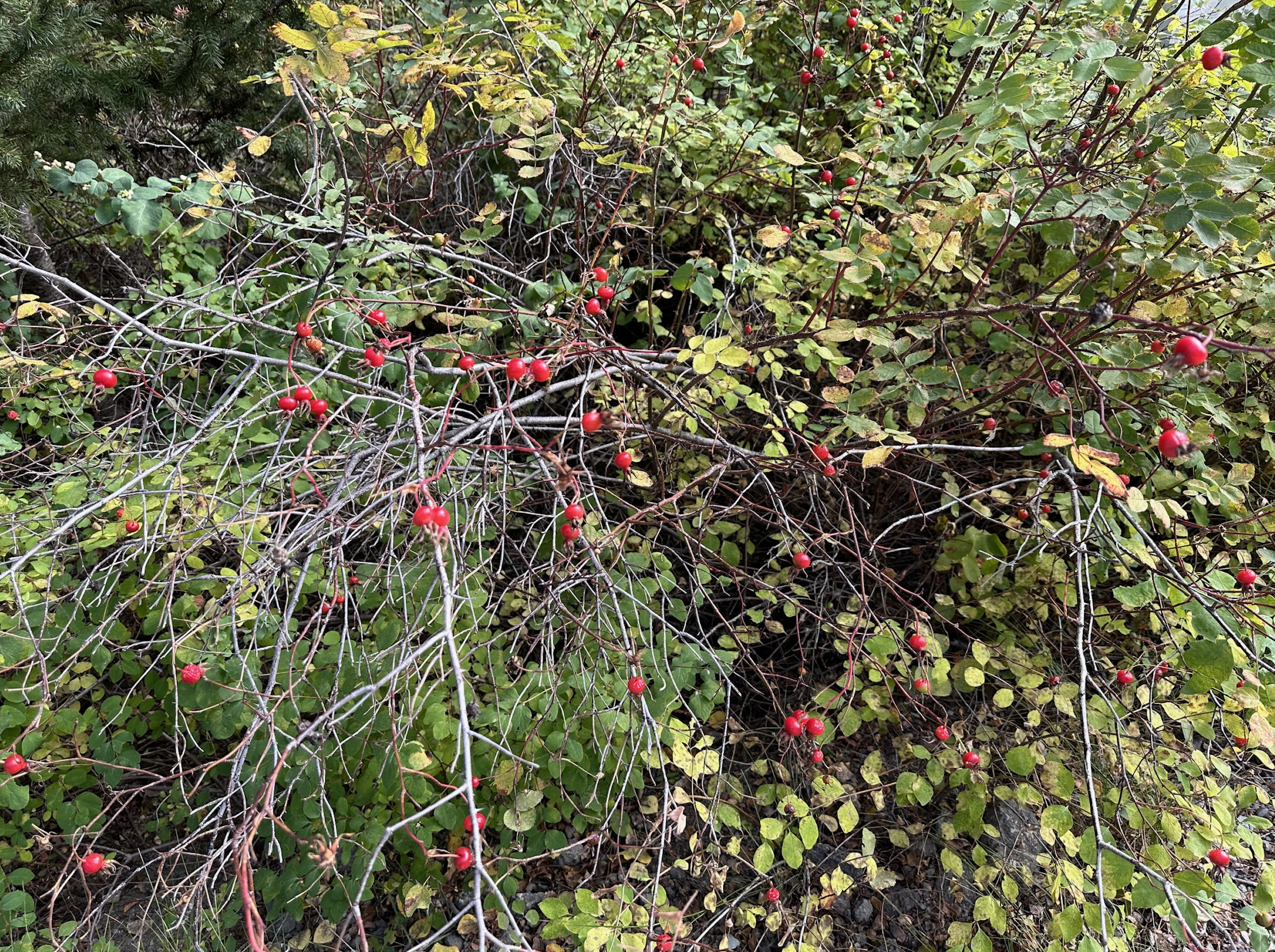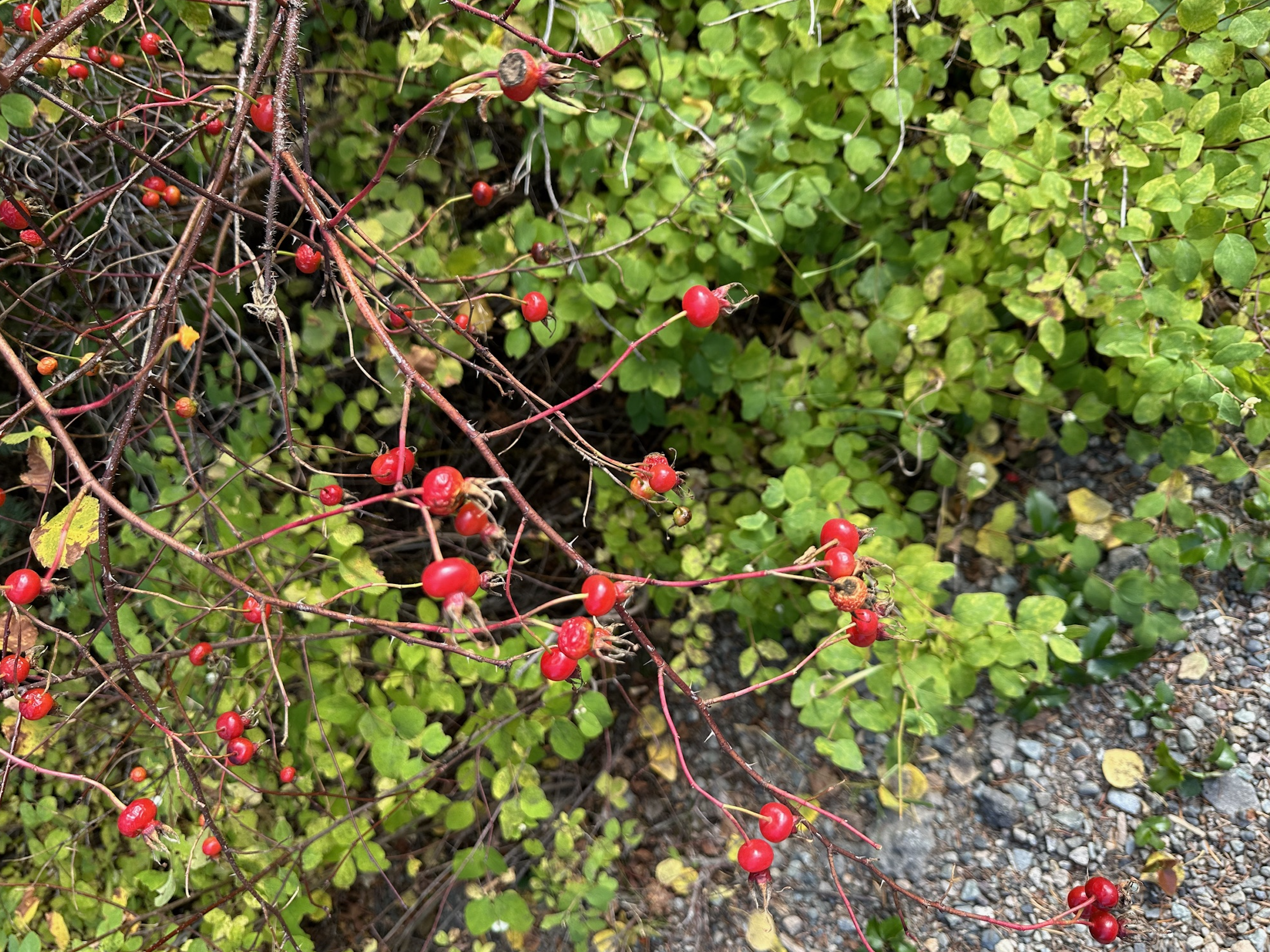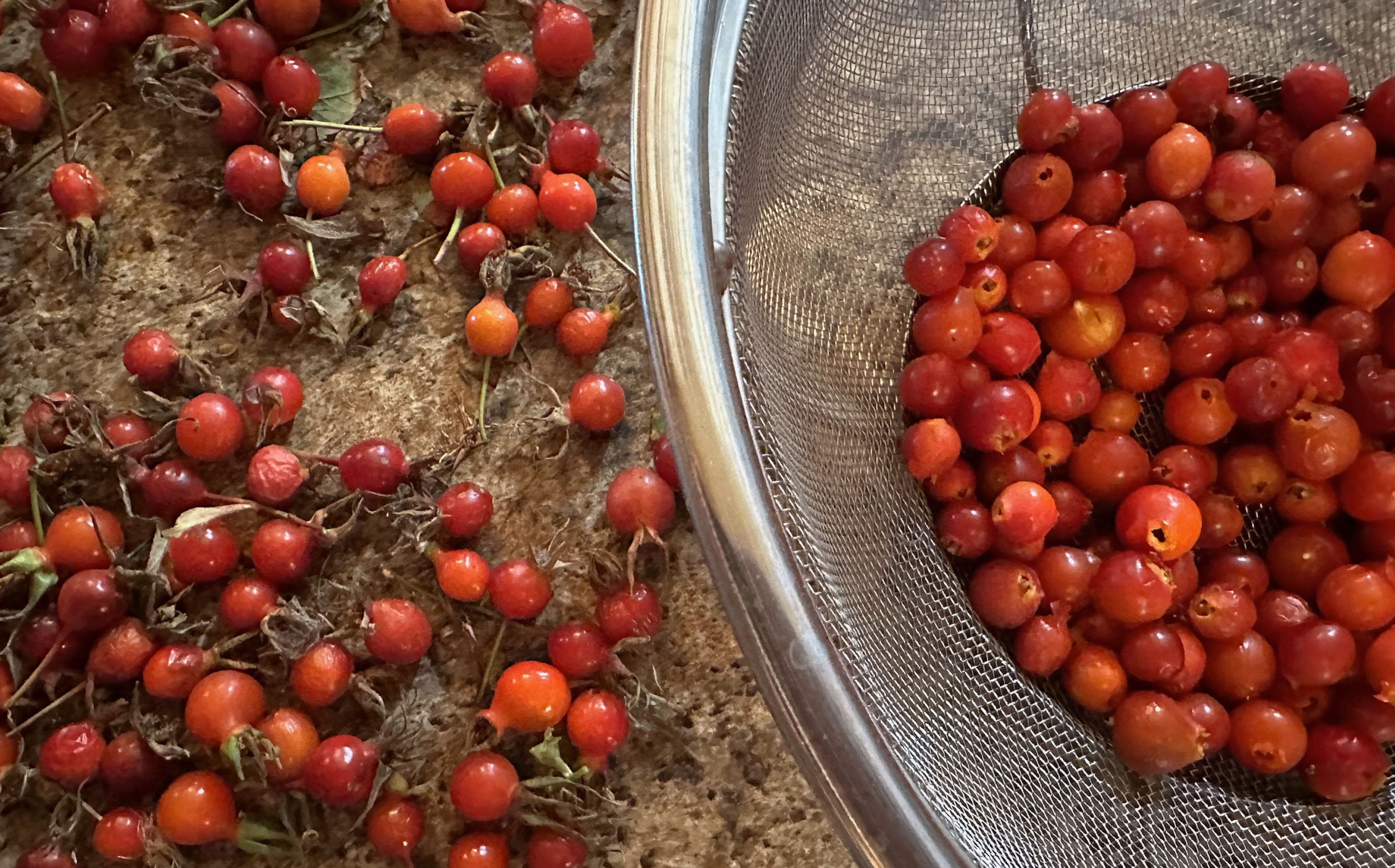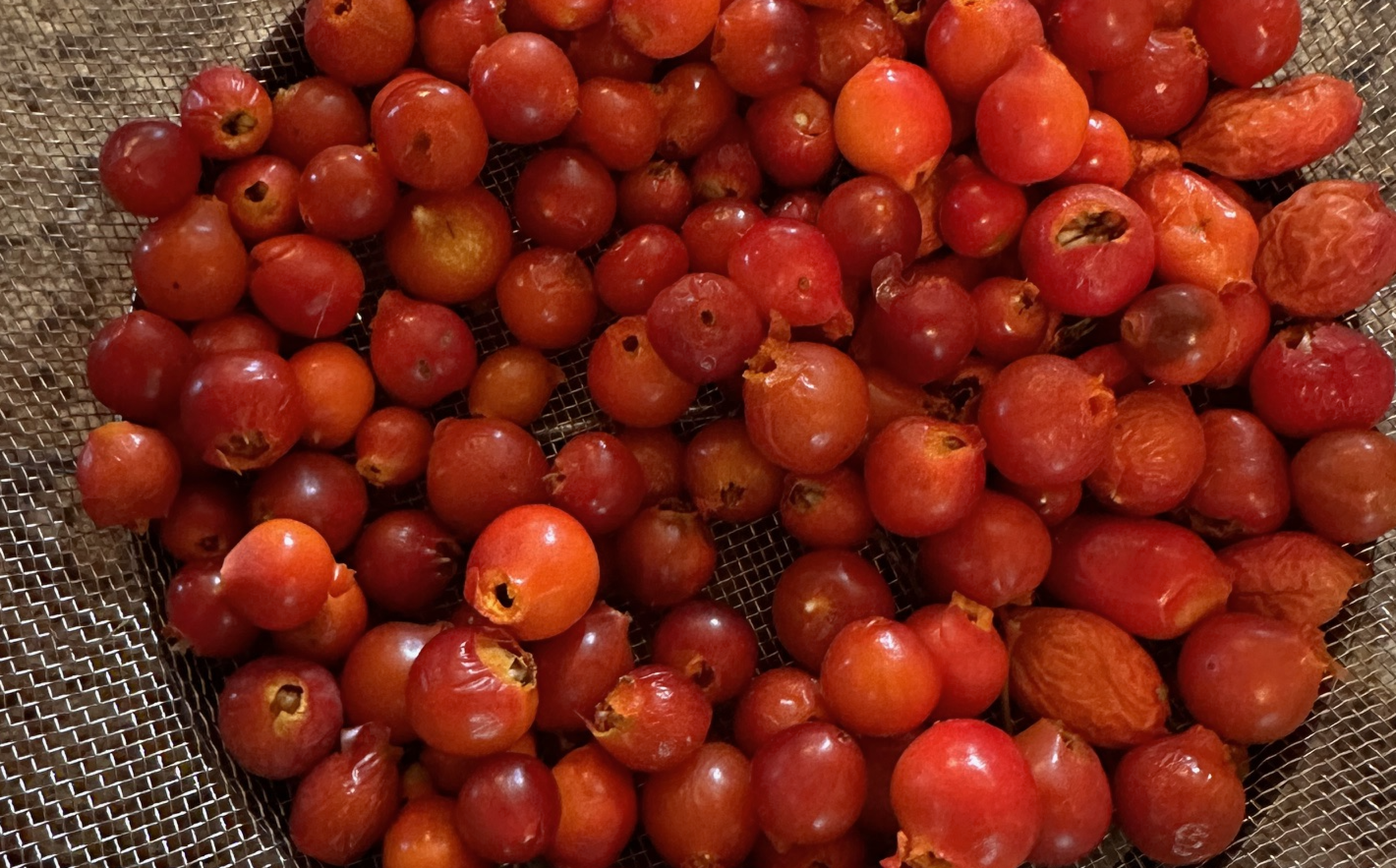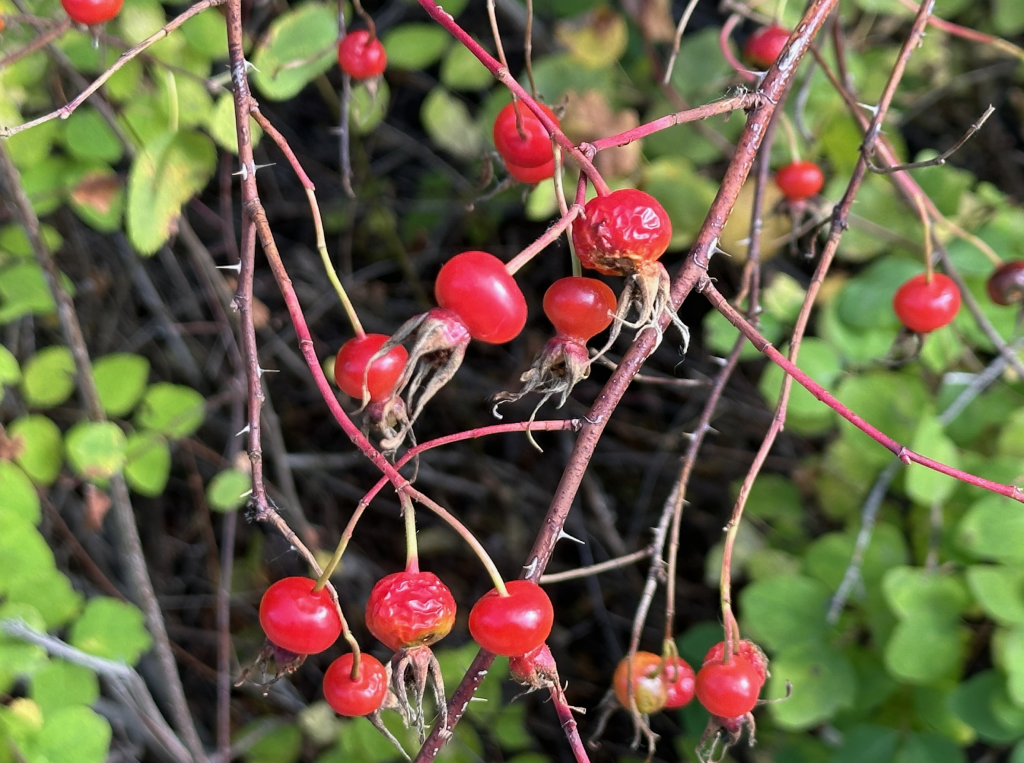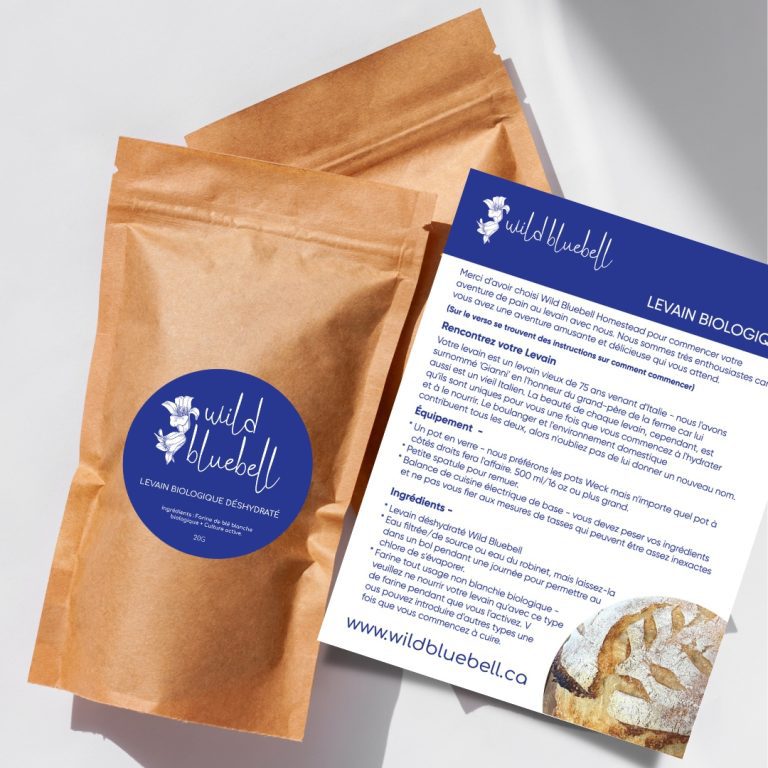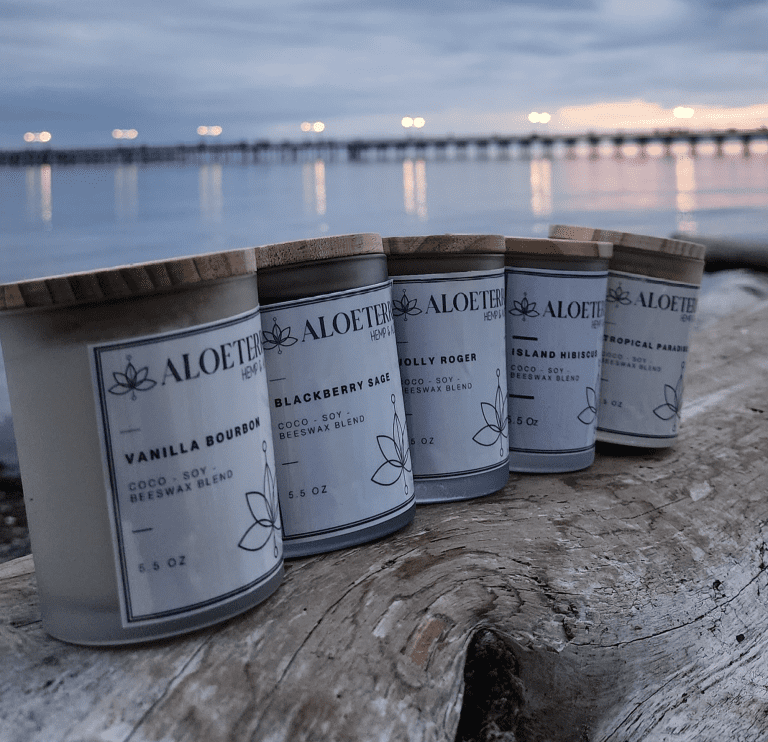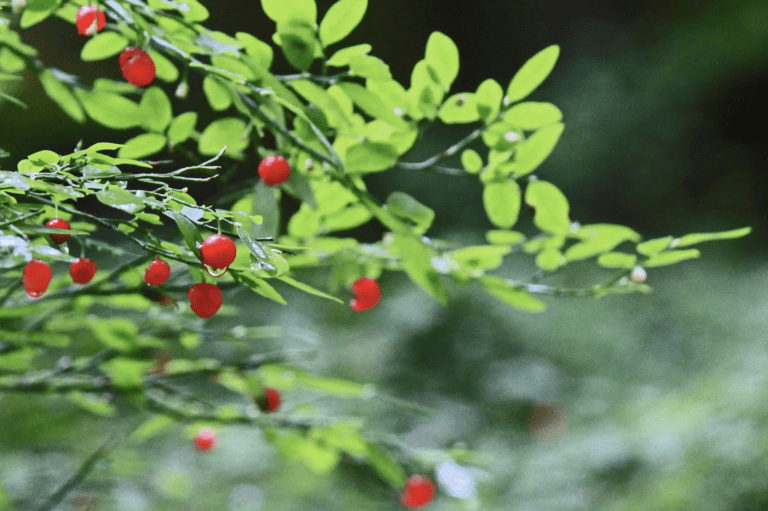Welcome to the Wild Bluebell Homestead blog, where nature’s remarkable gifts intersect with sustainable living practices. Today, we invite you to explore the meadows and forest edges of the Fraser Valley in British Columbia Canada, as we delve into the world of wild rosehips. These striking red fruits, the product of wild rose blooms, are not only visually captivating but also packed with nutrients and medicinal benefits. For generations, wild rosehips have been valued as a potent natural resource, offering nourishment and healing. Whether you’re a homesteader, forager, or a nature enthusiast, join us in uncovering the rich ecological, culinary, and cultural significance of wild rosehips.
Description and Appearance
- Scientific Name: Rosa spp.
- Color: Wild rosehips are typically bright red to deep orange, resembling miniature rubies.
- Size: Rosehips are generally spherical or oval-shaped, about the size of a small grape or marble.
- Leaves: The plant has serrated, pinnate leaves that turn a golden yellow in autumn, adding to its visual appeal.
- Habitat: Wild rose bushes thrive in well-drained, sunny locations, commonly found at the edges of forests, meadows, and alongside roadsides throughout British Columbia.
Taste and Culinary Uses
- Taste: Rosehips have a tart, tangy flavor, often compared to cranberries or sour cherries, with a subtle sweetness.
- Culinary Uses: In the kitchen, rosehips are highly versatile. They are most commonly used to make teas, jams, jellies, and syrups, thanks to their high pectin content. Their tartness complements sweet dishes like fruit preserves or baked goods, and they can be incorporated into savory dishes like sauces for game meats, such as deer or elk.
Foraging for Wild Rosehips
- Foraging Season: Wild rosehips are best harvested in the late fall, after the first frost, which enhances their sweetness and softens their texture.
- Foraging Tips: Look for bright red or orange rosehips that feel slightly tender when pressed. Avoid overripe or shriveled fruits. As with all wild foraging, practice sustainability by leaving enough fruit for wildlife, especially during the winter months when food sources are scarce.
Cultural and Historical Significance
- Indigenous Use: Wild rosehips have been an important resource for Indigenous peoples of North America for centuries. They were often dried and stored for use during the winter months, providing a crucial source of vitamins and nutrients when other food sources were scarce. Rosehip tea was traditionally used for its health benefits, particularly in treating colds, indigestion, and other ailments.
- Medicinal Uses: Wild rosehips are among nature’s richest sources of vitamin C, historically used to prevent scurvy during long winters or voyages. In herbal medicine, rosehips are also prized for their anti-inflammatory properties and their use in relieving cold symptoms, boosting immune function, and promoting skin health.
Nutritional Content
- Vitamins and Antioxidants: Wild rosehips are extraordinarily rich in vitamin C, making them a powerful immune booster. They also contain vitamins A, E, and K, as well as bioflavonoids and antioxidants, which contribute to overall health by neutralizing free radicals and reducing inflammation.
- Minerals and Fiber: Rosehips provide a good source of minerals, including calcium, magnesium, and potassium. They are also high in soluble fiber, which aids digestion and supports a healthy gut.
Sustainability and Conservation
- Foraging Considerations: Practicing sustainable foraging is essential to ensure wild rosehip populations remain robust for future generations. Harvest responsibly by leaving some fruit for wildlife, as rosehips are an important food source for birds and small mammals during the winter.
- Ecological Impact: Wild rose bushes contribute to biodiversity and ecosystem health by stabilizing soil, preventing erosion, and providing habitat for pollinators. Their flowers attract bees and other beneficial insects in the spring, and their fruit sustains wildlife through colder months, highlighting their ecological importance.
Culinary Preparations
- Teas and Infusions: One of the simplest ways to enjoy wild rosehips is in a tea or infusion. Dried rosehips can be steeped in hot water to create a soothing, vitamin-rich beverage. Rosehip tea is refreshing and often consumed for its immune-boosting properties.
- Jams and Jellies: Their high pectin content makes rosehips ideal for creating thick, flavorful jams and jellies. Their tart flavor pairs well with apples, pears, or sweeter berries, and they can be used as a filling for pastries or as a spread for bread.
- Syrups and Vinegars: Rosehip syrup is a traditional remedy for colds and a versatile ingredient in the kitchen. It can be drizzled over pancakes, used as a sweetener in drinks, or blended into sauces. Rosehip vinegar, infused with the fruit, makes an excellent addition to salad dressings or marinades, adding a tart, fruity depth of flavor.
As we conclude our exploration of wild rosehips, we see how these small but vibrant fruits represent more than just a seasonal curiosity. They are a testament to the resilience of nature and its ability to offer both beauty and sustenance. At Wild Bluebell Homestead, we are dedicated to celebrating and preserving these natural treasures. We hope this journey into the world of wild rosehips inspires you to connect more deeply with nature and appreciate the abundance around us. May your foraging be fruitful, and your culinary creations reflect the richness of the wild. Stay with us for more insights and stories from the heart of nature, right here at Wild Bluebell Homestead.
